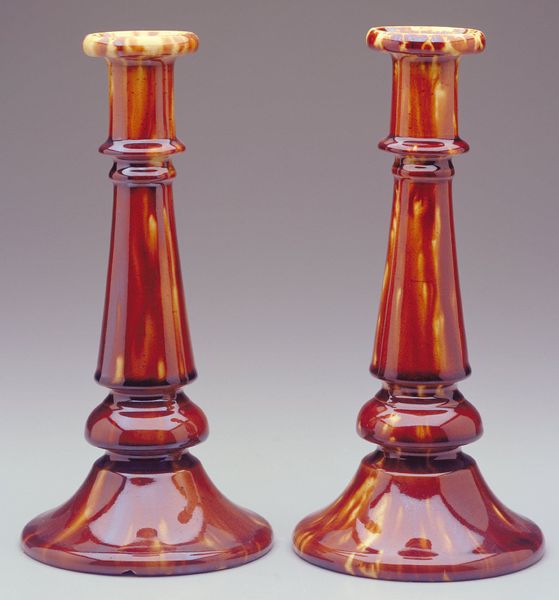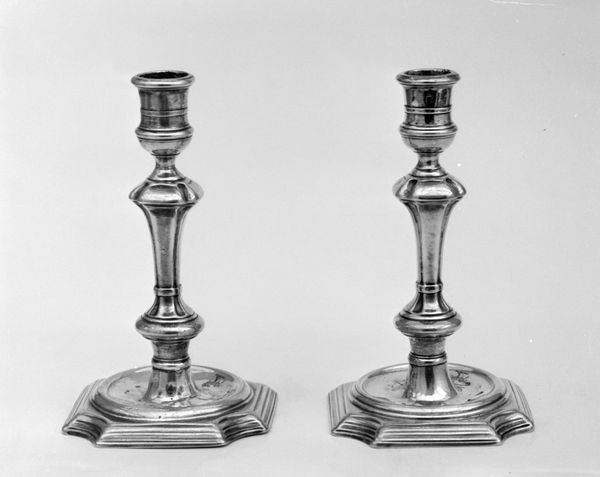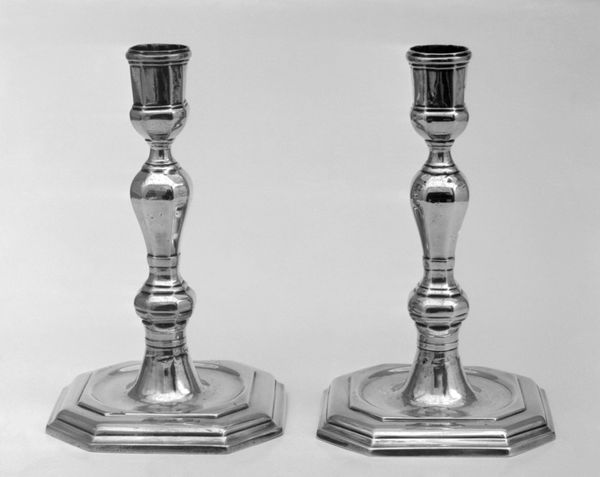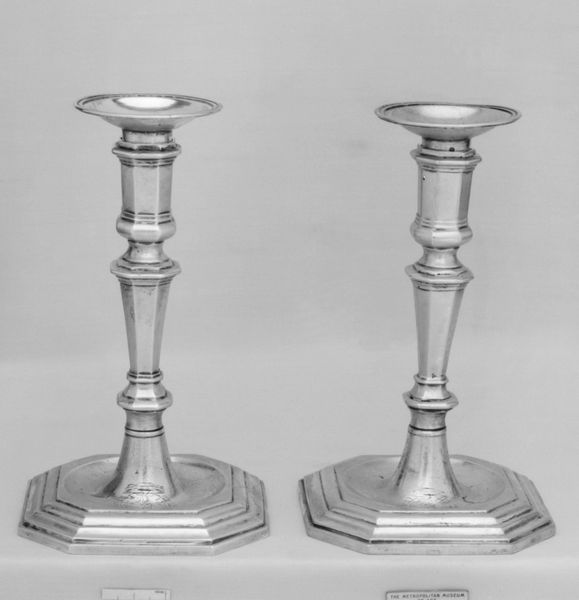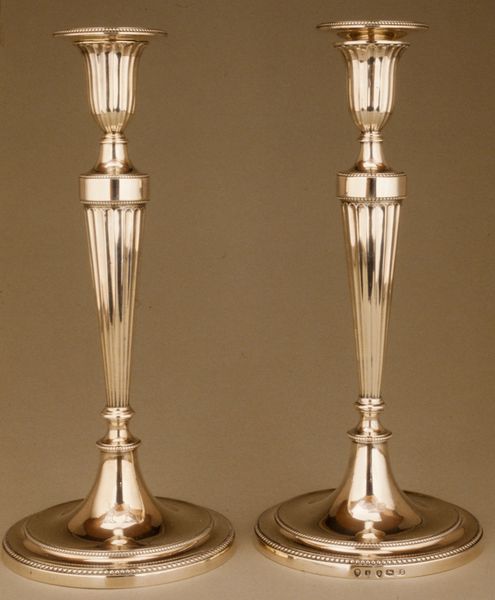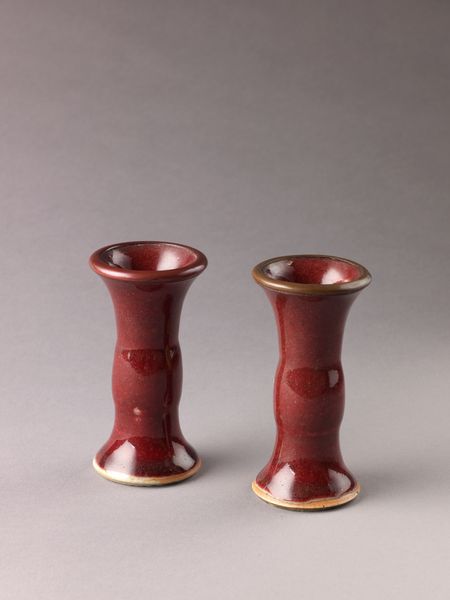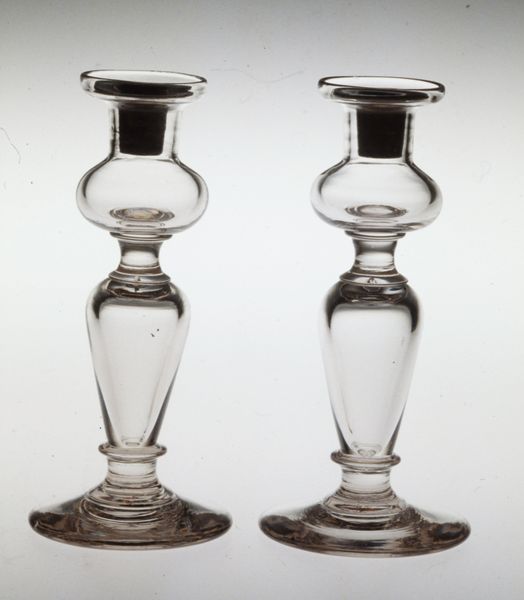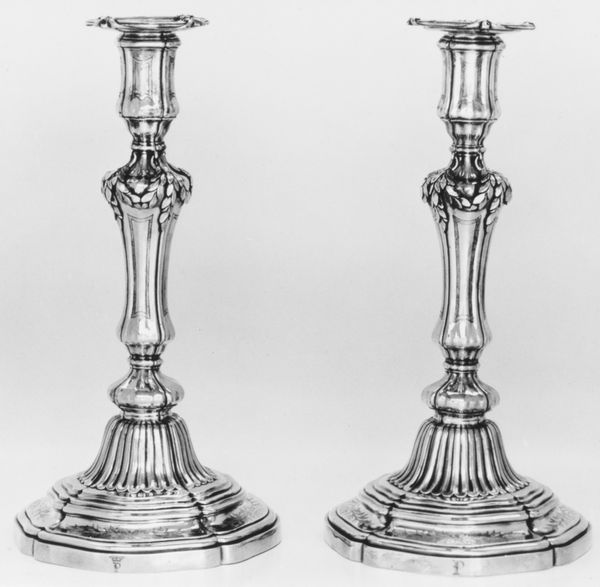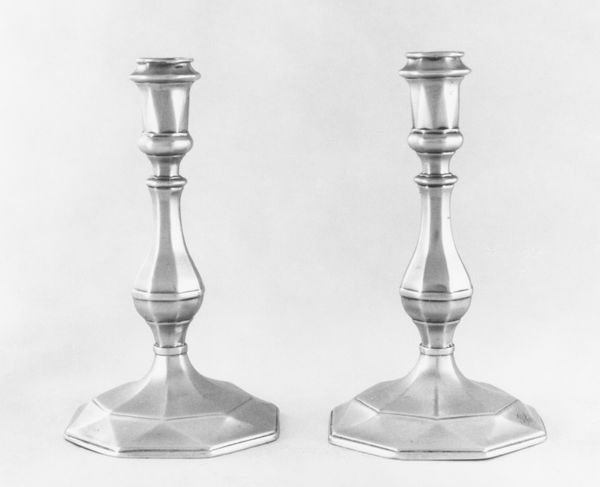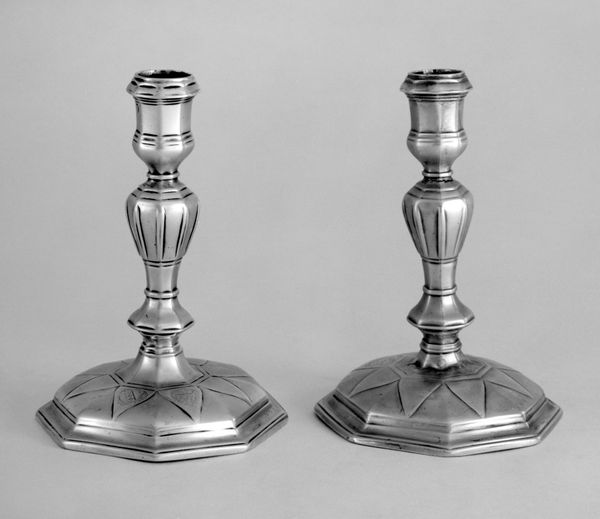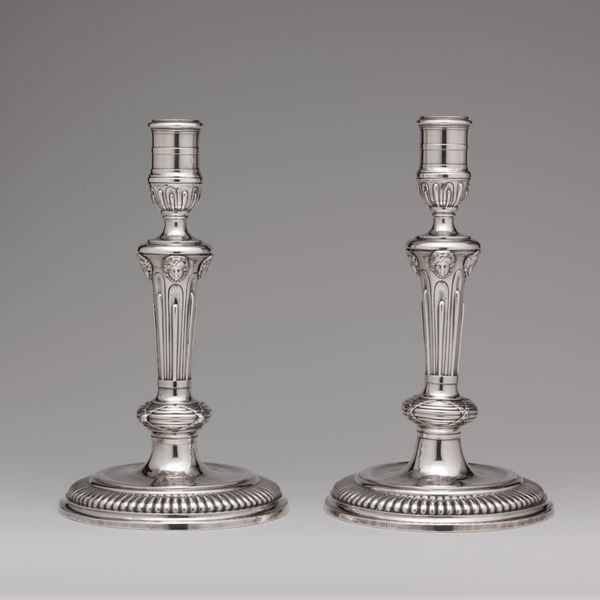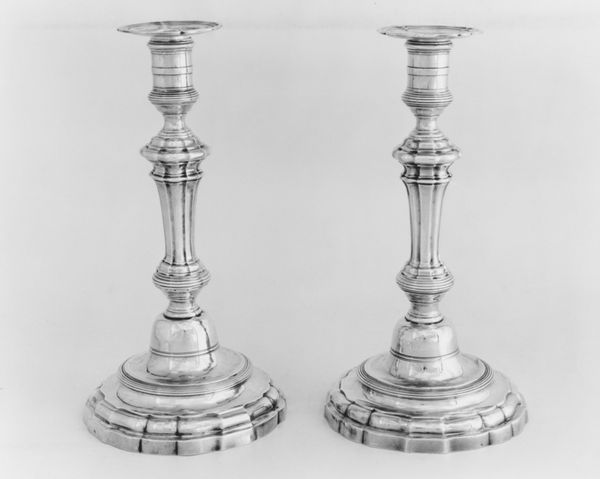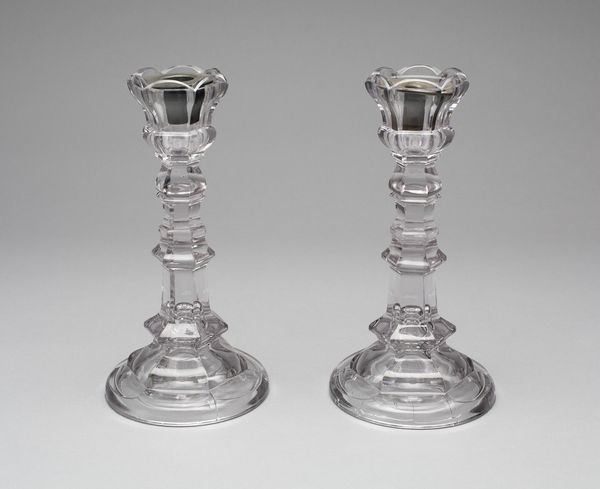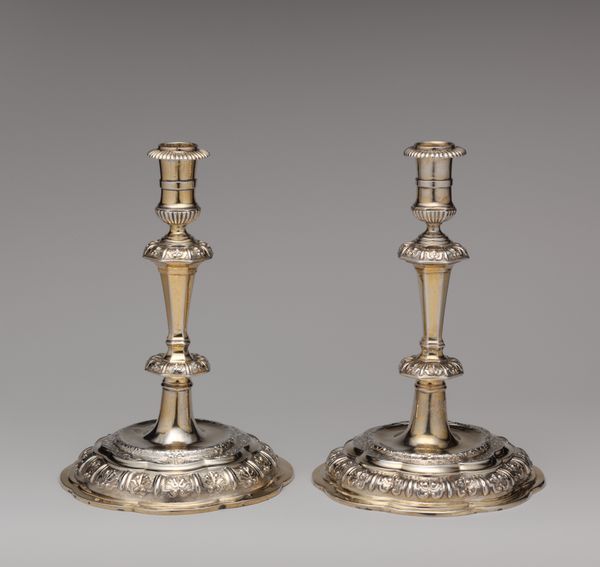
ceramic
#
ceramic
#
form
#
ceramic
#
decorative-art
Dimensions: 9 1/2 x 4 3/4 x 4 3/4 in. (24.1 x 12.1 x 12.1 cm)
Copyright: Public Domain
Curator: Well, these ceramic candlesticks certainly glow, don’t they? The amber and reddish-brown glaze gives off this comforting feeling. Editor: It’s interesting how familiar these feel, though. In what ways did pieces like these ceramic candlesticks function beyond their practical purpose during the 19th century? What do their decorative forms and common use tell us about social life at the time? Curator: A lot, actually. Candlesticks such as these illuminate a broader domestic narrative—particularly as they reflect Victorian aesthetics that became closely tied with bourgeois ideals. These items really weren’t about the stark utility of illuminating darkness, they reflected evolving cultural notions surrounding warmth, safety, and, really, domestic comfort. Editor: Visually, that interplay between the darker clay beneath the warm glazed surface—that is intentional, correct? Like faux marbling. This really does contribute a strong, almost earthy sense. They echo a more simplified pastoral life, wouldn’t you agree? A kind of symbolic return. Curator: Perhaps…though, consider the role that design manufacturers such as Wedgwood and others played in wider middle class access to fashionable commodities. In doing so, mass manufacture brought imitations of natural materials and the craft of artisans directly into private spheres in new ways. How did these mass commodities and production effect cultural status markers? These kinds of designs would democratize high style but simultaneously signal its opposite! Editor: Yes, and the imitation of the real creates the space for art to move culture…That mottled glaze—which is also used in this way to approximate tortoiseshell—certainly plays to that idea. They have this down-to-earth element that balances some kind of implied elevated design. Curator: In other words, the owners would seek a kind of subtle status via objects like these—ones that emulate higher social value or distinction. And these are the questions objects within decorative arts continually raise! Editor: Fascinating—it highlights how an ordinary object embodies the story of broader cultural and societal shifts… Curator: Exactly! These ceramics, which were not considered artwork at the time, challenge our current definition of art as elite aesthetic work and forces an interrogation into the democratization and the business of visual taste and its value.
Comments
No comments
Be the first to comment and join the conversation on the ultimate creative platform.
